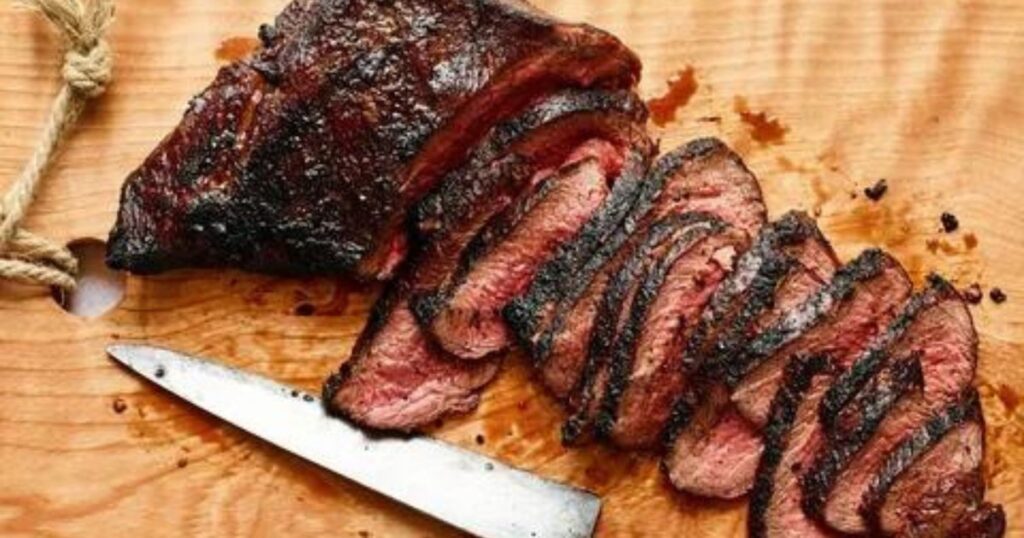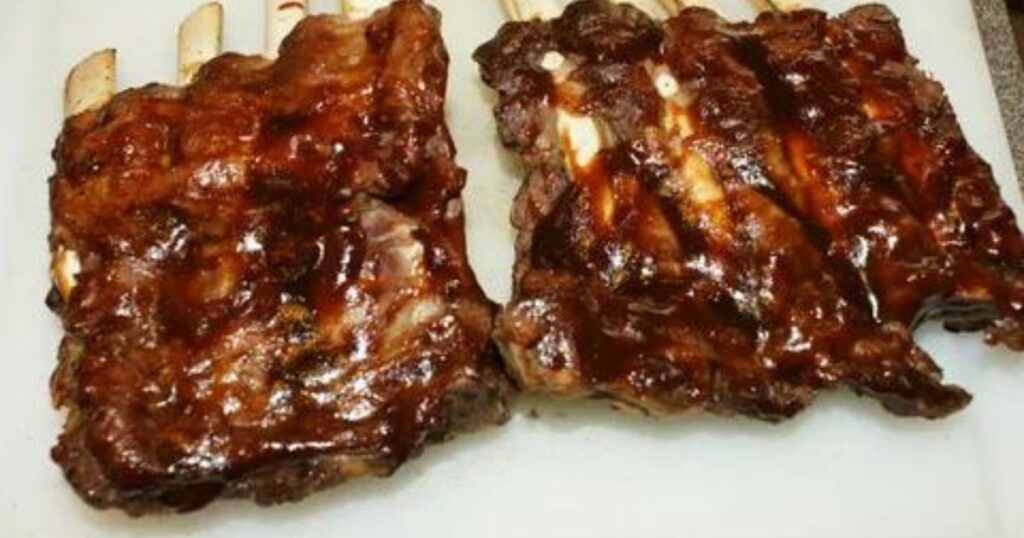Cooking a bison steaks involves seasoning it with desired spices, then grilling or pan-searing it until it reaches the desired level of doneness. Remember to let it rest before slicing to retain its juices. Enjoy your flavorful and lean bison steaks.
Ever wondered how to master the art of cooking bison steaks? Discover the secrets to a succulent sear and tender bite in just a few simple steps. Whether you’re a seasoned chef or a kitchen novice, unlocking the flavours of bison steaks is easier than you think. Ready to elevate your culinary skills? Let’s dive into the delicious world of bison steaks cooking.
Cooking a bison steaks is simple and delicious! Start by preheating your grill or skillet to medium-high heat. Season the steak with salt, pepper, and any desired herbs or spices. Place it on the grill or skillet and cook for about 3-4 minutes per side for medium-rare. Let it rest for a few minutes before serving for optimal flavour. Enjoy your tender and flavorful bison steaks.
Choosing the Right Cut
Choosing the right cut of bison steaks is crucial to achieving a delicious and satisfying meal. When selecting a cut, opt for those that offer a good balance of tenderness and flavour. Ribeye, sirloin, and tenderloin cuts are popular choices among bison enthusiasts due to their inherent tenderness and rich taste. These cuts typically feature a moderate amount of marbling, which contributes to their juiciness and succulence when cooked to perfection.
Additionally, inspect the marbling and colour of the steak before purchasing. Well-marbled bison steaks with streaks of fat throughout indicates better flavour and tenderness. Look for cuts that have a vibrant red hue and avoid those with excessive browning or discoloration. By choosing the right cut of bison steaks, you set the stage for a memorable dining experience that showcases the natural goodness of this lean and flavorful meat.
Preparing the Steak

Preparing the steak is a crucial step in ensuring a delicious outcome. Begin by allowing the bison steaks to sit at room temperature for approximately 30 minutes before cooking. This helps the meat cook more evenly throughout and prevents it from becoming tough. Next, season the steak generously with salt, pepper, and any desired herbs or spices. Bison steaks has a rich flavour of its own, so keeping the seasoning simple allows its natural taste to shine. Massage the seasoning into the meat, ensuring it coats the entire surface evenly. This step not only enhances the flavour but also creates a beautiful crust when seared on the grill or skillet.
Additionally, consider marinating the steak for a few hours or overnight in a mixture of oil, vinegar, garlic, and herbs for added flavour and tenderness. However, if you choose to marinate, be mindful not to overpower the natural taste of the bison. Once seasoned, the steak is ready to be cooked to perfection, showcasing the best qualities of this unique and flavorful meat.
Preheat the Grill or Skillet
Preheating the grill or skillet is a crucial step in ensuring that your bison steaks cooks evenly and develops a delicious sear on the outside. Whether you’re grilling outdoors or using a skillet indoors, achieving the right temperature is essential. For grilling, preheat your grill to medium-high heat, around 375-400°F (190-200°C). This temperature allows the steak to cook through without burning the exterior. If using a skillet, preheat it over medium-high heat on the stovetop until it’s hot enough to make a drop of water sizzle on contact.
Once your grill or skillet is properly preheated, you’re ready to cook your bison steaks. The high heat will help sear the outside of the steak, locking in its juices and creating a flavorful crust. Be sure to monitor the temperature throughout the cooking process to avoid burning the steak. With the grill or skillet hot and ready, you’re well on your way to preparing a succulent bison stea that’s sure to impress.
Cooking the Bison Steaks
Cooking bison steaks requires a delicate balance between achieving a beautifully seared exterior and maintaining a tender, juicy interior. Once the grill or skillet is preheated to medium-high heat, carefully place the seasoned bison steaks onto the cooking surface. Allow it to cook undisturbed for approximately 4-5 minutes on each side, depending on the thickness of the steak and desired level of doneness. Resist the temptation to constantly flip the steak, as this can disrupt the searing process and result in less flavorful meat. Instead, let the heat work its magic, creating a caramelised crust on the outside while sealing in the natural juices within.
As the bison steaks cooks, you’ll notice its rich aroma filling the air, promising a delicious culinary experience. Keep a close eye on the steak, ensuring it doesn’t overcook. Bison meat cooks relatively quickly, so it’s essential to monitor the cooking process closely to achieve the perfect level of doneness. Once cooked to your preference, whether it’s a succulent medium-rare or a slightly more well-done option, remove the steak from the heat and allow it to rest for a few minutes before slicing. This short resting period allows the juices to redistribute throughout the meat, resulting in a tender and flavorful bison steaks that’s sure to delight your taste buds.
Resting the Steaks
Resting the bison steaks is a crucial step in the cooking process that often gets overlooked. After the steak is removed from the heat source, it’s essential to allow it to rest for a few minutes before slicing and serving. During this resting period, the steak continues to cook internally as the residual heat gently distributes throughout the meat. This rest period also enables the juices, which have been concentrated towards the centre during cooking, to redistribute evenly throughout the steak. As a result, you’ll find that your bison steaks is exceptionally tender, juicy, and bursting with flavour when properly rested.
Moreover, resting the steak provides an opportunity for the flavours to intensify and meld together, enhancing the overall taste and texture of the dish. Whether you’ve opted for a succulent ribeye or a tender sirloin cut, allowing the bison steaks to rest ensures that each bite is an exquisite culinary delight. So, exercise patience during this crucial step, and you’ll be rewarded with a perfectly cooked bison steaks that’s sure to impress even the most discerning of palates.
Serving Suggestions
Serving bison steaks offers a wonderful opportunity to create a well-balanced and delicious meal. When considering accompaniments, opt for sides that complement the robust flavour of the bison without overpowering it. Roasted vegetables, such as asparagus, Brussels sprouts, or carrots, provide a flavorful and nutritious addition to your plate. Their caramelised sweetness and tender texture perfectly complement the savoury richness of the bison steaks.
Additionally, consider serving the bison steaks with a starch component like mashed potatoes, roasted potatoes, or wild rice. These hearty sides offer a satisfying contrast to the lean meat, adding both texture and substance to the meal. Whether you’re hosting a special dinner or enjoying a cosy meal at home, thoughtful pairing of sides will enhance the overall dining experience and allow the distinct flavours of the bison steaks to shine.
Conclusion
In conclusion, cooking bison steaks is a rewarding culinary endeavour that offers a flavorful alternative to traditional beef steak. By following the steps outlined in this guide, you can achieve a perfectly cooked bison steaks that is tender, juicy, and bursting with rich flavour. Remember to select high-quality cuts, properly season the steak, and cook it over medium-high heat for optimal results. Whether you’re grilling outdoors or searing in a skillet indoors, the key is to avoid overcooking to preserve the steak’s natural tenderness.
With the right approach, serving bison steaks becomes a delightful experience, showcasing the unique taste of this lean and flavorful meat. So, gather your ingredients, fire up the grill or skillet, and embark on a culinary journey to savour the deliciousness of bison steaks.
Faqs
What makes bison steaks different from beef steak?
Bison steaks is leaner and has a slightly sweeter and more robust flavor compared to beef steak. It also tends to be lower in fat and calories.
Is it necessary to marinate bison steaks before cooking?
It’s not necessary to marinate bison steak, as its natural flavor is delicious on its own. However, you can marinate it if you prefer, but keep it simple to let the bison’s flavor shine through.
How can I tell when bison steaks is cooked to perfection?
The best way to determine doneness is by using a meat thermometer. For medium-rare bison steaks, aim for an internal temperature of around 130-135°F (54-57°C).
Can I grill bison steaks like I would grill beef steak?
Yes, you can grill bison steaks similarly to beef steak. Just remember to cook it over medium-high heat and avoid overcooking to maintain its tenderness and juiciness.
Where can I purchase bison steak?
Bison steak is available at many specialty meat markets, online retailers, and some grocery stores. Look for reputable sources that offer high-quality, grass-fed bison for the best flavour and texture.
click on this link to get information”How To Cook Smoked Turkey Wings?“


